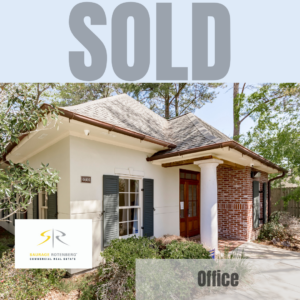“Fast Fashion” Abounds
Written by Carmen R. Austin, MBA, CCIM, Associate Broker and Retail Specialist at Saurage Rotenberg Commercial Real Estate
Just in case you have been living under a rock and are not familiar with the term, “fast fashion”, it is a term used to describe clothing collections which are based on the most recent fashion clothing collections. These trends are designed and manufactured quickly, and in an affordable way to allow the mainstream consumer to take advantage of current clothing styles at a lower price point. The definition is affordable basics and disposable trends, and oftentimes even considerably “disposable” clothing. And boy is it thriving in this economy! Furthermore, Forever 21 has become a leader amongst these types of retailers in and across the U.S. and internationally. They have recently been expanding almost virally over the past few years and have become an example of a giant success story among retailers who are actually thriving in this recent economic downturn in response to the cost sensitive consumer. They have prospered tremendously by actually taking advantage of and jumping at the opportunity to overtake such large abandoned high-end anchor spaces gone dark by Mervyn’s and other big box retailers and department store brands. Theirs has been a success story of growth and expansion in a down economy by offering cheap and affordable clothing to the masses of value oriented customers trying to achieve a high-end look. On the other hand with this has come much controversy, lawsuits, and negative exposure. Encompassing everything from being accused of such wrong-doings as copyright infringement when it comes to designs and intellectual property, to going as far as being accused of running “sweat shops” with cheap and child labor to decrease cost in production in order to sustain offering their product at such low prices, to even wasting and throwing clothes away when they are no longer in style. Regardless, personally I think this poses an interesting story of an international retailer who has experienced tremendous success, growth and momentum, in a very short period of time, and has benefited greatly during this economic downturn when so many other national retailers are still struggling. Read the attached article for more information on this brand’s expansion.The cheap-chic teen retailer is growing amid questions about just how original its clothes are
Written by Susan Berfield, [January 20, 2011 / BusinessWeek.com]
Article submitted byCarmen R. Austin, MBA, CCIM, Restail Specialist and Associate Broker for Saurage Rotenberg Commercial Real Estate
The Takashimaya store on Manhattan’s Fifth Avenue was spare, exquisite, and often too quiet for its own good. It closed in June. Five months later, only the Japanese department store’s marble floors and high ceilings remain. The six-floor, 30,000-square-foot space has been transformed into a glittery, dizzying showplace for Forever 21, the cheap chic teen retailer with sprawling ambitions, not the least of which is wanting the grown-up world to take it seriously.
On a late November morning the day before the store is to open for the first time, Linda Chang takes a moment to contemplate her family’s ambitions. “It’s pretty historic that we’re on Fifth Avenue,” she says. “We’ve tried hard not to make it feel like fast fashion.” Chang has recently become the slightly more public face of the very private family that owns Forever 21, and she’s still feeling her way into the role. Chang is 29 with an undergraduate business degree from the University of Pennsylvania, and she’s been leading the marketing department for the past two years. One day she’ll likely run the nearly $3 billion, 477-store, 35,000-employee chain. For now, Do Won and Jin Sook, or Mr. and Mrs. Chang, as everyone at Forever 21 calls them, are still very much in charge. Mrs. takes care of the merchandise; Mr. takes care of everything else.
He is here today, a youthful-looking man in his 50s wearing a dark blazer, jeans, and a wool scarf. No one dares approach him uninvited. Linda is far more outgoing. “This is our rock-and-roll section: sequins, black lace, leopard, some leather, a mix of the wild things, our faux fur, crochet,” she says, sweeping her arm across just some of what’s on the first floor. She’s dressed modestly in a Forever 21 black T-shirt and jeans with a boyfriend blazer. Her necklace, of interlocking Cs, is Chanel.
A 20-foot chandelier dangles from the mezzanine above, and flecks of gold paint shimmer on the walls. On other floors, Linda points out plaid shirts, Nordic ski sweaters, sweaters with elbow pads, military-style jackets, capes, draped work dresses. On and on it goes: Forever 21’s buyers—and shoppers—expect the stores to offer every trend. “Mrs. Chang oversees all the merchandise,” says Linda of her mother. “But she doesn’t travel to store openings. She says: ‘I’ll get you the product. You sell it.’ “
I notice a pair of faux-leather lace-up ankle boots that look a lot like the Jeffrey Campbell ones I’m wearing: The style is the same, so are the combination of hooks and holes for the laces and the distinctively shaped heel. Forever 21 sells the boots for $35.80, less than one-quarter the price I paid. I mention them, and Linda says brightly: “You should buy another pair here.” Fashion watchers will find a lot more that looks familiar in Forever 21.
On the sixth floor, we stop in front of a revolving rack suspended from the ceiling. “That’s one of my sister’s favorite things,” Linda says. “The clothes rotate around, and you can stop it when you want. It’s from the movie Clueless. My sister wishes she could have one in her room.” Linda’s sister is Esther, who graduated from Cornell University with a degree in fashion and merchandising and at 24 is the head of the company’s visual display team. She’s been up all night putting the finishing touches on the store. “Esther had one week to set it up. We’re fast. Everything we do is fast. We found out we had this space six weeks ago,” says Linda.
The store is the third the company has opened in just two weeks and the hundredth in the past year. Forever 21 has been quick to take advantage of the misfortunes of other retailers, moving into buildings abandoned by Saks (SKS), Sears (SHLD), Mervyns, Dillard’s (DDS), Circuit City, Virgin Megastore, and HMV. It’s staked out some of the most prestigious real estate in the world—on this stretch of Fifth Avenue, on London’s Oxford Street, in Tokyo’s Shibuya district. Its new Times Square store is 96,000 square feet; its store on the Las Vegas Strip is 127,000. In seven years, Forever 21 has grown from 1 million square feet of space to 10 million, from one brand of its own to six, offering clothes for kids, men, and plus-size and pregnant women. This year it plans to open at least 75 more stores in five countries. Forever 21 had a profit of $135 million in 2008, the last time it made figures public. And it did all this without selling any item for more than $60.
To read this article in its entirety click HERE.
To see this week’s Featured Property click HERE.
Carmen has been a practicing commercial real estate broker since 2001. She is a graduate of the Louisiana State University (LSU) E.J. Ourso College of Business and the LSU Flores Masters of Business Administration (MBA) Program with a specialization in Entrepreneurship and Real Estate Finance. Her experience includes past employment as Regional Director of Leasing at Commercial Properties Realty Trust the for-profit arm of the Baton Rouge Area Foundation. Carmen’s affiliations include Louisiana REALTORS®,Greater Baton Rouge Association of REALTORS® Commercial Investment Division, International Council of Shopping Centers, Commercial Real Estate Women, Certified Commercial Investment Member Institute, National Association of REALTORS®, and Urban Land Institute. She is also an active volunteer on the board of directors for the Baton Rouge Gallery, LSU MBA Alumni Association, Junior Achievement of Baton Rouge, and the Junior League of Baton Rouge. Carmen currently serves as the 2010 President of the Louisiana CCIM Chapter.
Saurage Rotenberg Commercial Real Estate is a member of the Baton Rouge Area Chamber of Commerce (BRAC); the West Baton Rouge Chamber of Commerce; the Baton Rouge Growth Coalition; the Baton Rouge Better Business Bureau; the Louisiana Commercial Data Base (LACDB); and the International Council of Shopping Centers (ICSC). Several agents, on an individual basis, are members of the Society of Industrial and Office Realtors® (SIOR), the Certified Commercial Investment Member Institute (CCIM); the National Association of REALTORS® (NAR); and the Greater Baton Rouge Association of REALTORS® Commercial Investment Division (CID).



